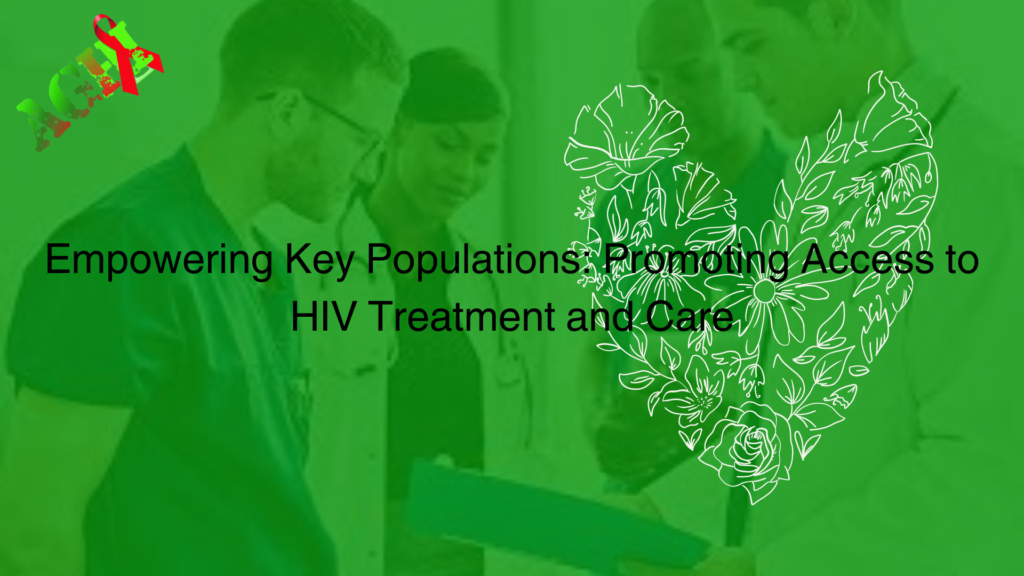
Access to HIV treatment and care is a critical component in empowering key populations and ensuring their well-being. However, various barriers can hinder their ability to access these vital services. In this blog post, we will explore the importance of promoting access to HIV treatment and care for key populations and discuss strategies to overcome barriers, advocate for inclusive healthcare systems, and empower individuals to take control of their health.
- Understanding Key Populations: Define key populations, including but not limited to the LGBTQ community, sex workers, people who inject drugs, and individuals in correctional settings. Highlight the unique vulnerabilities they face regarding HIV transmission and the importance of tailored treatment and care.
- The Significance of Early Diagnosis: Emphasize the importance of early HIV diagnosis for key populations. Discuss the benefits of early detection in improving health outcomes and reducing the risk of transmission. Encourage regular HIV testing and highlight available testing options.
- Addressing Stigma and Discrimination: Highlight how stigma and discrimination can act as significant barriers to accessing treatment and care for key populations. Discuss the impact of internalized and external stigma and advocate for non-judgmental and inclusive healthcare environments.
- Comprehensive Treatment and Care Services: Explore the range of services available in HIV treatment and care, including antiretroviral therapy (ART), regular monitoring, and support for managing side effects. Stress the importance of comprehensive care that considers physical, mental, and emotional well-being.
- Promoting Linkage to Care: Discuss strategies to improve linkage to care for key populations, such as peer navigation programs, community outreach initiatives, and mobile clinics. Highlight the role of healthcare providers, community organizations, and support networks in facilitating access to care.
- Reducing Financial Barriers: Address the financial challenges that key populations may face in accessing HIV treatment and care. Discuss the importance of affordable or free services, insurance coverage, and government programs aimed at reducing financial barriers to access.
- Multidisciplinary Approach: Highlight the significance of a multidisciplinary approach to HIV treatment and care for key populations. Discuss the collaboration between healthcare providers, social workers, psychologists, and other professionals to address the complex needs of individuals.
- Cultural Competency and Sensitivity: Advocate for cultural competency training for healthcare providers to ensure they understand and respect the unique needs and experiences of key populations. Stress the importance of providing culturally sensitive care to foster trust and improve health outcomes.
- Peer Support and Engagement: Explore the role of peer support programs in empowering key populations. Discuss how peer-led initiatives can provide a safe and understanding space, offering guidance, encouragement, and shared experiences to navigate the treatment and care journey.
- Advocacy and Policy Change: Encourage individuals and organizations to advocate for policy changes that promote access to HIV treatment and care for key populations. Discuss the importance of community-driven advocacy, raising awareness, and influencing policymakers to prioritize inclusive healthcare systems.
Promoting access to HIV treatment and care for key populations is crucial for their well-being and the overall goal of ending the HIV epidemic. By addressing barriers, combating stigma, and advocating for inclusive healthcare systems, we can empower key populations to access the life-saving treatment and support they deserve. It is through collective efforts that we can create a future where no one is left behind and where equitable access to HIV treatment and care is a reality for all key populations.
